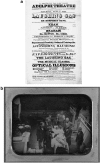Molecular targets underlying general anaesthesia
- PMID: 16402123
- PMCID: PMC1760740
- DOI: 10.1038/sj.bjp.0706441
Molecular targets underlying general anaesthesia
Abstract
The discovery of general anaesthesia, over 150 years ago, revolutionised medicine. The ability to render a patient unconscious and insensible to pain made modern surgery possible and general anaesthetics have become both indispensible as well as one of the most widely used class of drugs. Their extraordinary chemical diversity, ranging from simple chemically inert gases to complex barbiturates, has baffled pharmacologists, and ideas about how they might work have been equally diverse. Until relatively recently, thinking was dominated by the notion that anaesthetics acted 'nonspecifically' by dissolving in the lipid bilayer portions of nerve membranes. While this simple idea could account for the chemical diversity of general anaesthetics, it has proven to be false and it is now generally accepted that anaesthetics act by binding directly to sensitive target proteins. For certain intravenous anaesthetics, such as propofol and etomidate, the target has been identified as the GABA(A) receptor, with particular subunits playing a crucial role. For the less potent inhalational agents, the picture is less clear, although a relatively small number of targets have been identified as being the most likely candidates. In this review, I will describe the work that led up to the identification of the GABA(A) receptor as the key target for etomidate and propofol and contrast this with current progress that has been made in identifying the relevant targets for other anaesthetics, particularly the inhalational agents.
Figures







References
-
- BAI D., ZHU G., PENNEFATHER P., JACKSON M.F., MACDONALD J.F., ORSER B.A. Distinct functional and pharmacological properties of tonic and quantal inhibitory postsynaptic currents mediated by GABAA receptors in hippocampal neurons. Mol. Pharmacol. 2001;59:814–824. - PubMed
-
- BALI M., AKABAS M.H. Defining the propofol binding site location on the GABAA receptor. Mol. Pharmacol. 2004;65:68–76. - PubMed
-
- BHATTACHARYA A.A., CURRY S., FRANKS N.P. Binding of the general anesthetics propofol and halothane to human serum albumin. High resolution crystal structures. J. Biol. Chem. 2000;275:38731–38738. - PubMed
-
- CAMPAGNA J.A., MILLER K.W., FORMAN S.A. Mechanisms of actions of inhaled anesthetics. N. Engl. J. Med. 2003;348:2110–2124. - PubMed
Publication types
MeSH terms
Substances
LinkOut - more resources
Full Text Sources
Other Literature Sources
Medical

